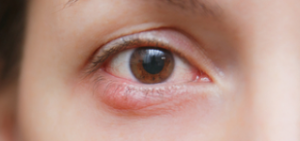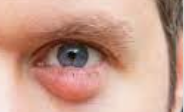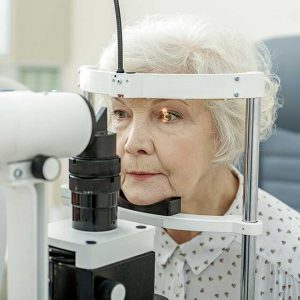Has your eyelid suddenly begun to twitch? If so, then you’ve experienced a condition called myokymia.
Myokymia, eyelid twitching, affects only the eyelid, this spasm or twitch is fairly common and affects most people at some point in their lives.
The eye twitch normally affects only one eye at a time and might involve either the lower or upper lid. The twitching of the eyes can be subtle or irritating. It typically stops after a few minutes, but it can happen again after a few hours, days, or longer period of time.
What causes myokymia?
Eyelid spasms can happen for no apparent reason. The cause is rarely investigated because they are rarely an indicator of a significant health problem.
However, the following factors may cause or aggravate eyelid twitches:
- Stress
- Fatigue
- Eyelid strain
- Eye irritation
- Lack of sleep
- Medication side effects
- Physical exertion
- Use of caffeine, tobacco or alcohol
Other conditions that sometimes cause e eyelid twitching:
- Dry eyes
- Uveitis
- Blepharitis
- Light sensitivity
- Corneal abrasion
If the spasms become chronic, you may have a condition called “benign essential blepharospasm,” which refers to involuntary blinking or winking.
If you’ve experienced any eye twitching, contact an eye doctor near you.
SEE RELATED: What is a Stye?
Complications of myokymia
Very rarely, eyelid spasms are a symptom of a more serious nerve or brain disorder. When eyelid twitches are a result of these more serious conditions, they’re almost always accompanied by other symptoms.
Nerve and brain disorders that may cause eyelid twitches include:
- Cervical dystonia – causes the head to twist into uncomfortable positions and the neck to randomly spasm
- Bell’s palsy – also known as facial palsy, is a condition that causes one side of your face to droop downward
- Dystonia – causes unexpected muscle spasms and the affected area’s body part to contort or twist
- Parkinson’s disease – can cause balance problems, muscle stiffness, trembling limbs, and difficulty speaking
- Multiple sclerosis (MS) – a disease of the central nervous system that causes movement and cognitive problems, as well as fatigue
- Tourette syndrome – characterized by verbal tics and involuntary movement
How is myokymia treated?
Most eye twitches go away without treatment in a few days or weeks. However, if they don’t stop, try to eliminate or decrease potential causes.
The most common causes of eyelid twitching are fatigue, caffeine and stress. To ease eye twitching, you might want to try:
- Applying a warm compress to your eyes when a spasm begins
- Keeping your eye surfaces lubricated with over-the-counter eye drops or artificial tears
- Drinking less caffeine
- Getting enough sleep
To treat benign essential blepharospasm, botulinum toxin (Botox injections) are sometimes used to ease severe spasms for a few months. However, as the effects of the injection wear off, you may need further injections.
Another option to treat more severe cases of benign essential blepharospasm is a myectomy, a surgery that removes some of the muscles and nerves in the eyelids.
Twitches related to lack of sleep, stress and other lifestyle factors have the best outlook. If an underlying health condition is the reason, the best method to stop the twitching is to address the underlying condition.
LEARN MORE: Guide to Eye Conditions
Schedule an appointment with an eye doctor near you who can diagnose myokymia and prescribe the best treatment for you.









